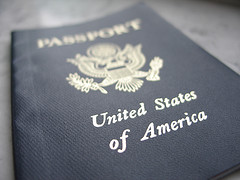Put down the Ink. Pencil your Passport Emergency Contact Instead
17 February 2012Have you ever noticed that the identification page of your passport – that’s the one with your picture and date of birth – doesn’t include your address? In fact, you won’t find your address anywhere in the standard-issued passport, which makes sense when you consider the fact that passports are good for a number of years, ten to be exact, and you may relocate within those ten years.
If you lose your passport, however, and some kind soul finds it, that person really has only one option if they want to return it – send it back to the US government (that address is in your passport).
Now, what’s your guess on whether the US government is going to take the time to track you down and return it to you ?
Your best recourse is to fill in the personal information, but you also have the option to fill in emergency contact information in your passport. Here’s what the personal data and emergency contact page in a relatively current passport looks like.
As you can see, mine doesn’t have the personal data filled in either (that will be corrected shortly).
The fields to be filled in (on the left) include:
- Bearer’s address in the United States
- Bearer’s foreign address
- In case of emergency contact
If you’re staying overseas for some period of time, you can fill in your foreign address for the same reason – so your passport can be returned to you if it’s lost.
The document even recommends filling in these fields with a pencil, so they can be updated as necessary, which also makes sense. If your spouse is traveling with you, you may not want him or her listed as the emergency contact. At least, not on this particular trip. On a trip where your spouse is staying home, listing him or her may be the best idea.
Don’t forget to check the information in your kids’ passports too!
Now, where’s a pencil?
Related topics
Damian Tysdal is the founder of CoverTrip, and is a licensed agent for travel insurance (MA 1883287). He believes travel insurance should be easier to understand, and started the first travel insurance blog in 2006.


